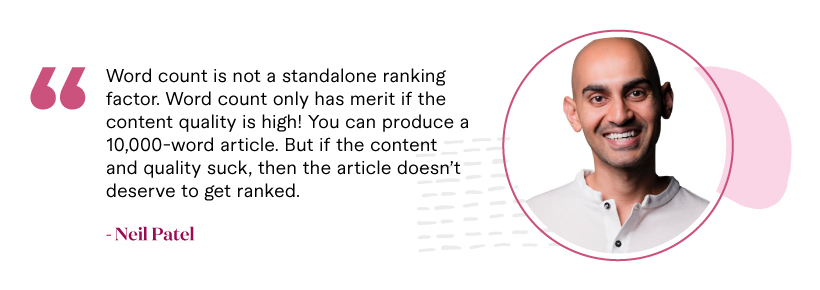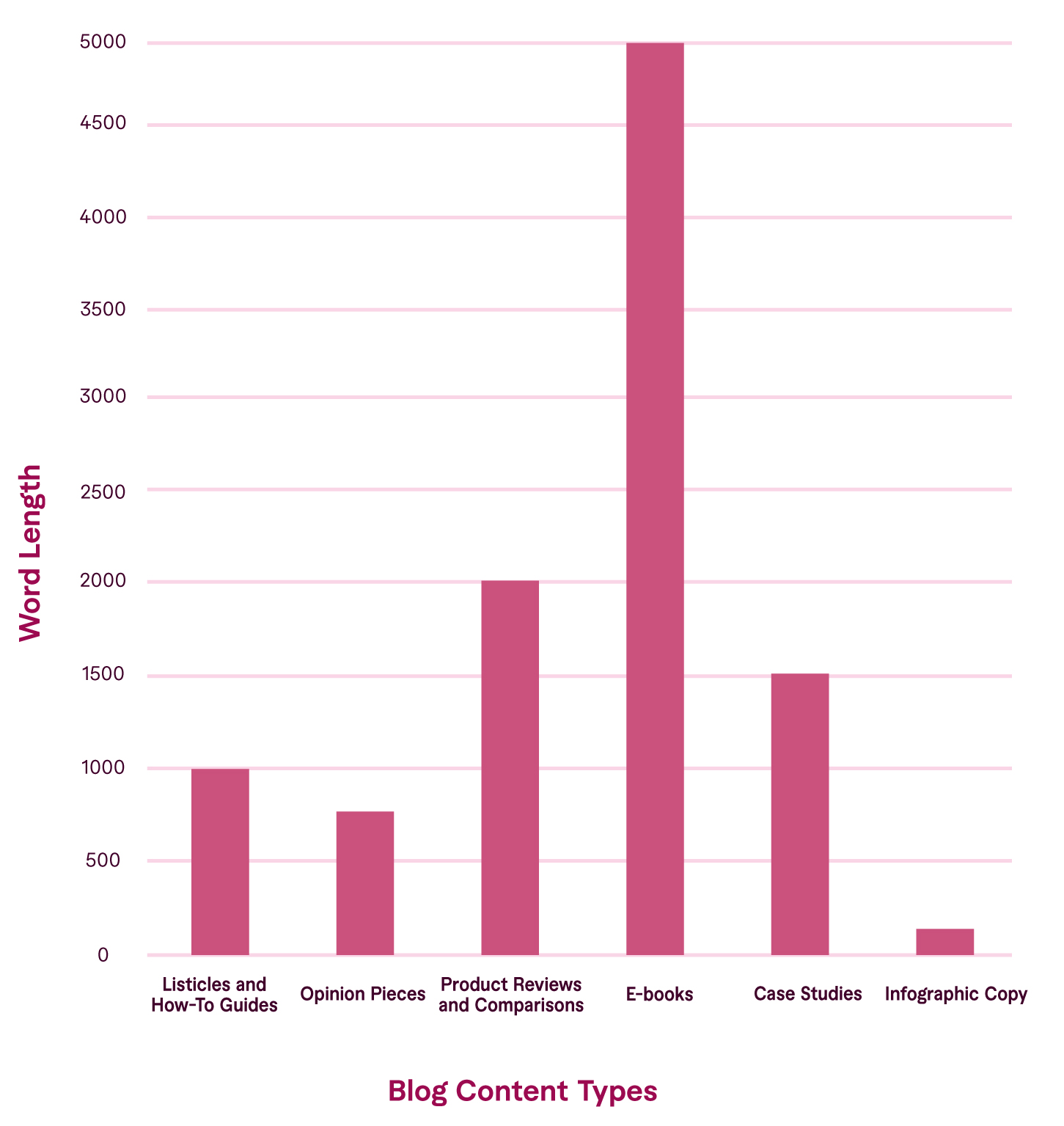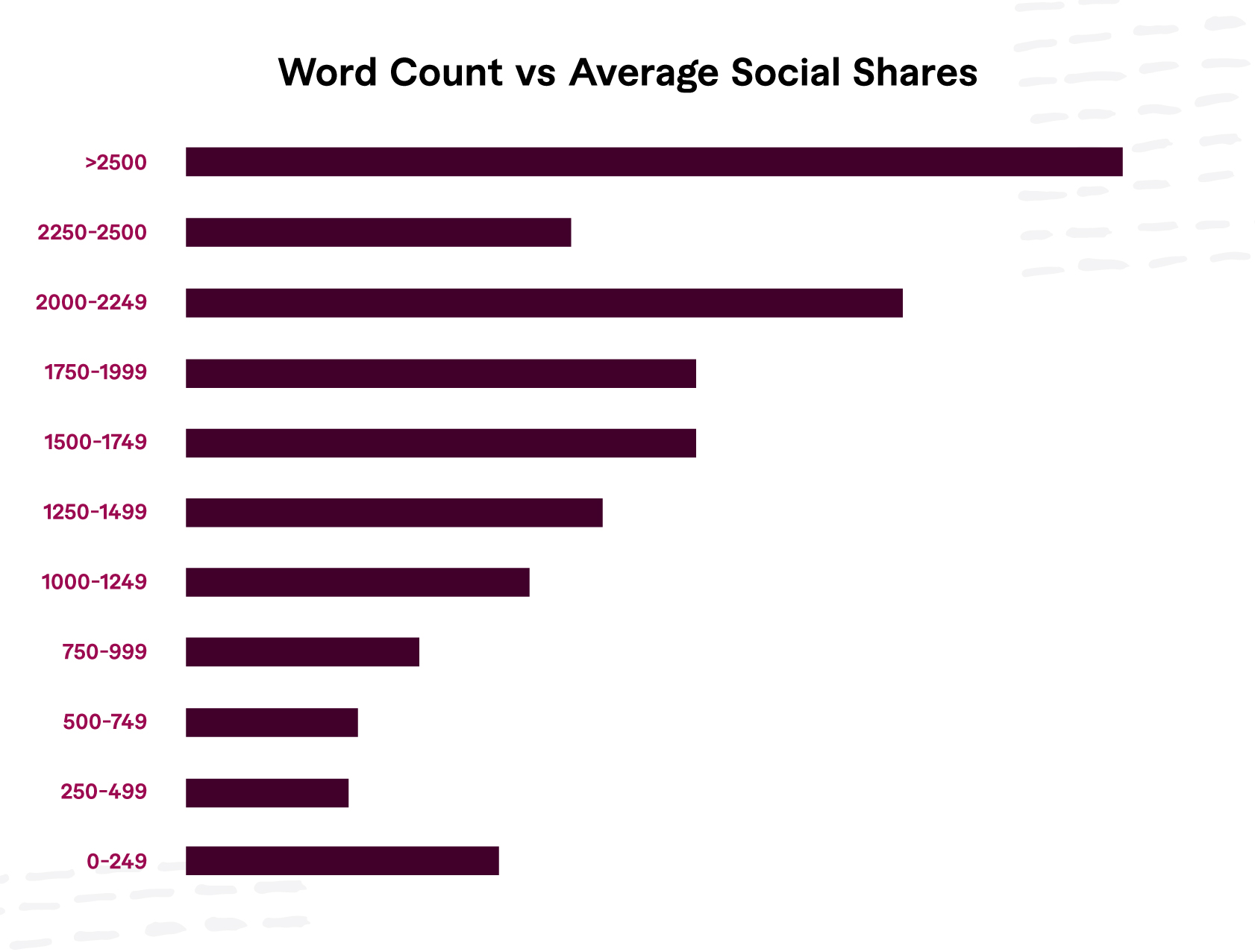Long post or short post? Is 500 words enough for a blog post? Is 1,000 words long enough? Is longer content better? How long should a blog post be for SEO?
It seems that this age-old debate has no clear answer. That’s because the ideal content length depends on the purpose of the content and its intended audience.
Let’s take a look at the factors to consider when determining the ideal lengths for various types of content.

Content length and SEO
Google has said it before. Content length and the amount of time visitors spend on a page are not ranking factors.
But content quality is.
Content quality, according to Google’s John Mueller, isn’t just about the text but all the other elements that make up a webpage, including images and loading speed.
So why the fuss about word counts?
Longer, more comprehensive content is more thorough, provides more examples and explanations, and covers a wider range of related topics. These types of content tend to rank better on Google.
Additionally, there are more opportunities to include keyword target variations in longer pieces, which can help the content rank for a range of search terms. And if your content is high-quality, they’re likely to garner more backlinks.
A quick Google search for “how to lose weight in a week,” yielded the following pieces in the first four spots:
- Mayo Clinic’s “Weight loss: 6 strategies for success” (1,142 words)
- Stylecraze’s “How To Lose Weight In 1 Week — Simple Tips To Follow At Home” (3,178 words)
- WikiHow’s “How to Lose Weight in a Week” (2,588 words)
- Healthline’s “The Military Diet: All You Need to Know” (1,504 words)
But this doesn’t mean longer is always better.
A search for “how to make homemade ice cream” yielded these first three results:
- Bigger Bolder Baking’s “Homemade Ice Cream Recipe with Only 2 Ingredients” (1,008 words)
- Allrecipes’ “How to Make Vanilla Ice Cream” (690)
- Barefeet in the Kitchen’s “The Best (and Easiest) Ice Cream You’ll Ever Make” (1,168 words)
The “ideal” article length
There is no magic word count number. Depending on your audience and goals, the ideal article length will vary. However, marketing researchers have come up with several optimal ranges to consider:
- Hook Agency concluded that the average blog post length in 2023 should be between 1,760 and 2,400 words.
- Wix found that the ideal blog post length is 1,500-2,500 words, with 2,450 being the sweet spot.
- Neil Patel and team determined that these word count ranges produce the most backlinks: 1,001-1,500 1,501-2,000, and 3,001-3,500.
Long post or short post: Factors to consider
As we have seen, there’s no easy answer when it comes to ideal content length. But there are considerations to keep in mind when determining the length of your content.
Purpose of the content
Is the content’s goal to inform, persuade, or entertain? Different goals may require different content lengths.
News articles will usually be around 500-800 words, while a step-by-step guide on how to use a product may require 1,000-2,000 words. Memes, on the other hand, may only be a few sentences long.
Target audience
Consider your audience and their preferences. Are they looking for quick and concise information? Or do they prefer in-depth analysis? A younger audience may prefer shorter, more visually engaging content, while a professional audience may want longer, more detailed content.
Content type
Social media posts are typically shorter because of the character limits imposed by certain platforms. (LinkedIn and Facebook allow long-form posts). Blog posts, depending on the topic and the goals of the content, can be short or long (500-3,000 words), while product descriptions are usually 50-100 words.
Competition and industry standards
Research your competition. Take a look at the type of content they’re publishing. If they’re producing longer content on the same topic, you may need to match or exceed the lengths to stand out.
Ideal length for various blog content types
How long should a blog be?
The answer: As long as it needs to be, provided it offers value.
Also, lengths will vary by topic and industry. But if you’re looking for a word count range to start off with, here are some recommendations:
- Listicles and how-to guides: Neil Patel recommends around 1,000 words.
- Opinion pieces: Publications will have different guidelines for length. But the Harvard Kennedy School recommends 750-800 words.
- Product reviews and comparisons: Small Business Trends recommends anywhere between 1,000 and 2,000 words.
- E-books: 20-50 pages. Podia, meanwhile, recommends up to 5,000 words for short e-books.
- Case studies: WordStream recommends going for 500-1500 words.
- Infographic copy: At ClearVoice, we go for up to 100 words for short infographics.
Tips for writing effective blog posts of varying length
Whether it’s a short blog post or a long-form piece you’re creating, there are tips and techniques to keep in mind to make sure you’re creating informative, engaging content.
Focus on quality over quantity
Content length doesn’t always indicate quality. Case in point: padded content to meet a prescribed word count.
Instead, focus on your audience’s search intent. What are they looking for? Make sure your content is as long as it needs to be to answer the searcher’s questions or concerns. Use language that is easy to understand. Avoid unnecessary buzzwords or overly technical jargon.
Format your content for readability
Ensure readability by using the following elements and techniques:
- Headings and subheadings
- Bullet points and numbered lists where appropriate
- Short paragraphs of 2-3 sentences
- Whitespace to separate different content sections
- Bold and italic text
- Images and videos
Incorporate visual elements
Visuals make content easier to understand and much more engaging. Some tips:
- Use high-quality images
- Include infographics
- Add videos for product demonstrations, tutorials, or showcasing customer testimonials
- Use charts and graphs to present data more clearly
Experiment with different lengths
Experimenting with content length can help you find what works best for your audience. This can boost engagement and increase conversions.
Some tips on how to do this:
- Analyze the performance of your existing content. Check if length correlates with metrics such as engagement, traffic, bounce rate, time on page, and social shares.
- Get to know your audience. Use analytics tools to determine their preferred content lengths and formats.
- Break down longer content into shorter pieces, and create a series instead of a really long piece of content. Test how your audience responds to shorter content.
- Conversely, expand shorter content. If you’ve only ever published shorter content, try publishing long-form pieces to see if this type of content works better for your target readers.
- Conduct A/B tests to compare the performance of different content lengths.
- Check your metrics to see if there are any improvements and to adjust accordingly.
Content length isn’t everything
In content marketing, content length is just one part of a larger whole. Different sources will recommend different lengths. But at the end of the day, the best-performing content length is the one that enables you to achieve your business goals.
If you need help with high-quality content for your content marketing strategy, reach out to ClearVoice today!






